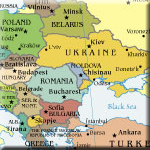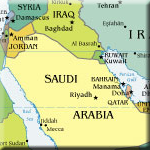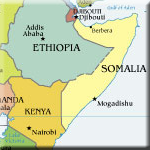




Our discussion up to this point allows us to list the preconditions that must be fulfilled if a post–conflict country is not to remain in a state of continuing anarchy and chaos. First, humanitarian aid has allowed most people who survived the conflict to also survive afterwards. Second, internal security has improved sufficiently to allow free movement of goods and people in all but the most remote parts of the country. Third, a political system has or is being established that will allow resolution of major conflicts, mainly ethnic and religious conflicts, without recourse to armed violence, and that will also help to maintain acceptable standards of good governance, thus preventing public corruption and inefficiency to grow to a level where they seriously disrupt economic activity. Fourth, there is enough public revenue from both domestic sources and donors to ensure continued funding of the cost of internal security and public administration in addition to the cost of primary health and education services and some other essentials.
The preconditions of stability and growth seem to have been fulfilled, even if sometimes with significant delay, in a number of countries, such as in South Korea after the peace of 1953; in Vietnam after 1975, but with a long delay; Thailand after 1985; Nicaragua after 1989; Cambodia and Slovenia after 1991; Lebanon and Mozambique after 1992; and Croatia after 1995. Other candidates for the list of successes are Iran, Rwanda, and Bosnia, but their stability seems more doubtful.
Many times in the recent history of armed conflict one or the other of these four conditions has not been fulfilled, usually with catastrophic results, in the form of widespread death from starvation and epidemics, anarchy and renewed armed conflict as shown in the table in Appendix 1.
In spite of this pitiful historical record, we will now make the courageous assumption that our four conditions of social stability have been fulfilled, and will ask: what other obstacles to economic recovery and growth are there, and how can they be overcome?
The world, and in particular its richest part, conveniently grouped as OECD member-countries, does not make it easy for a post-conflict country to get back on its feet. OECD member-countries advocate free trade in goods and services while at the same time strongly protecting many of their domestic producers through import tariffs, quotas and export subsidies against the competition from poor, low-wage countries mainly in labour-intensive activities such as agriculture and the textile industry. Post-conflict countries do not receive any preferential treatment in this area, not even for a transition period of a few years.
The same OECD member-countries also constitute most of what has come to be known as the donor community. However, being a donor only rarely means giving money to a post-conflict or other recipient country for free use within the framework of an agreed budget and an agreed economic and fiscal policy. Of the about 50 billion dollars of annual official development assistance, only a small portion, maybe 10 to 15 percent, is available to construct a viable budget. Most of the rest is effectively tied to supplies of goods or services from the respective donor country. Those goods frequently are not what the recipient country most urgently needs, but what the donor country chooses to supply, mainly to support its domestic industry. Also, the services provided by donor countries include a lot of technical assistance of very uneven quality, supplied by both its domestic consulting industry and mainly government financed so-called non-governmental institutions (NGOs).
Much of this development assistance comes in the form of loans, not grants, which would be all right if the borrowing country, similar to a commercial borrower, was free to decide what they want to do with the money.
Taken together, the trade and aid policies of developed countries come at a high price for developing countries and are widely perceived as counter-productive to the economic development of the world’s weakest and poorest economies. That, of course, includes most post-conflict countries.
To make matters worse, many poor countries, including many post-conflict countries, tend to adopt economic policies and practices that are serious obstacles to economic recovery and development.
Leading among these counter-productive practices and policies is a strong tendency by many governments to control and intervene in their country’s economic activity. This tendency is most pronounced in the case of the more authoritarian governments of the Middle East and Sub-Saharan Africa, where economic growth has been historically slow or absent and where armed conflict has arisen more frequently than in other parts of the world. Many governments in the Middle East and Sub-Saharan Africa, but not only there, prefer a relatively closed economy to an open one that benefits fully from the advantages and growth opportunities of international trade both within and between different parts of the world. Export is mainly encouraged for those commodities where the lion’s share of profits accrues to the ruling class. To that corresponds a preference for imports that help to prevent unrest in the new urban centres, such as imports of cheap subsidised surplus food from OECD countries.
Not surprisingly, the same governments dislike a genuinely independent private sector that would be an engine for economic prosperity and social change, thereby threatening the status quo of distribution of power and wealth between social groups. The prevalence of official corruption in the same group of countries is both an indication and a measuring stick for the continuing existence of their counter-productive policies and practices.
Post-conflict countries are unfortunately not much different from their neighbours in this regard. Many post-conflict governments, under pressure from the major western donors, including the IMF and the World Bank, declare that they will fight against corruption and will support free trade and the private sector. However, these formal declarations are rarely followed up by vigorous actions. This is an important reason why only few post-conflict countries have been able to achieve high rates of economic growth over long periods, and why so many post-conflict countries experience extremely high rates of unemployment, reaching up to 40 or 50 percent, and that not only for a post-war transition period, but frequently for many years.
Finding the way out of this post-conflict syndrome of poverty, stagnation and instability requires bold leadership on the part of both, donors and recipients. Both sides need to set aside the traditional way of post-conflict assistance and post-conflict governance and must agree on a new-style contract to win the peace: donor countries must genuinely open their markets to agricultural and manufactured products from post-conflict countries, while abstaining from dumping the surpluses of their subsidised agricultures on the markets of post-conflict countries, be it in the form of food aid or otherwise. Whatever food aid is provided should be monetized, that is, it should be given to the post-conflict government for sale on the domestic market in limited quantities so as not to severely depress the prices that local farmers can obtain for their produce. This would help to preserve the viability of local agriculture.
Monetizing food aid in this fashion would also reduce the financing gap in the budget of the post-conflict government. The total size of this gap has probably been estimated by the IMF who is the most competent institution to do that and whose estimate must guide donors in the allocation of their funds, bearing in mind that financing the budget gap should be the first priority of donor funding. The allocation of other donor funds should not be left to the whims of individual donors, but should be done in such a way that the individual parts add up to a meaningful and convincing program of post conflict recovery. The World Bank has been and continues to be the institution that is most capable of establishing such a program (cf. Chapter 11).
Following these rules would constitute a major change in the trade and aid policies of donor countries, even if it were limited to post-conflict countries. It can find public acceptance only if the recipient countries also make major changes in governance mainly by weeding out corruption and making instead transparency a leading principle of governance, by regulating the economy rather than unduly interfering in economic decision – making and by integrating the national economy in the world market. That may sound like a lot or even too much to ask for, but it has been achieved several times in the last fifteen years, as exemplified by Poland, Hungary, Turkey and some others. While these are not post-conflict countries of the type analysed here, there is no inherent reason why more classical post-conflict countries should not follow their example. Poland in particular achieved growth rates in excess of five percent during most of the 1990’s through the classic combination of balancing the budget, encouraging private initiative and opening the economy to the rest of the world.
Exposing a post conflict country’s local manufacturers and local agriculture to foreign competition may have to be a gradual process, since they probably have lost much of their competitive strength during an armed conflict. A targeted import duty of 20 to 25 percent during the initial phases of post-conflict recovery, which would be in addition to the general import duty proposed in Chapter 7, would provide some protection during a transition period of three to five years. It would also help to produce much needed public revenue.
Post-conflict fiscal policy, as discussed in Chapter 7, must be accompanied by the establishment of a functioning monetary and currency system. The pre-conflict system and its currency may have been destroyed through inflationary financing of the war, and the establishment of a new system, consisting of a functioning central bank, commercial banks, and a new currency, will normally take several years. In the meantime, the new government can choose one of two options: either use a foreign currency which is de facto dominating the economy as the country’s official currency for an interim period, or, where that is not practical, establish a currency board as a substitute for a central bank. (A currency board issues local currency like a central bank, but only within the limits of its foreign exchange reserves). In either case, money supply and therefore the risk of renewed inflation, is severely limited. Establishment of a currency board is the appropriate solution when relatively little foreign currency circulates in the economy. However, a currency board is allowed to issue local currency only to the extent that it is backed one by one by the board’s foreign currency reserves. That means in practice that the donors will have to provide the bulk of foreign exchange required for establishing a currency board, yet another important obligation that the donors do not like but that is frequently essential to establishing a functioning economy.
If one looks at the actions described in this chapter, which are required from both the donors and the post-conflict government and compares them to current practice, one is struck by the large divergence between what is being done and what should be done. It comes then as little surprise that the history of efforts to achieve post-conflict recovery is littered with failures. Both, donors and post-conflict governments must significantly change their ways to improve this record.
Other important elements of post-conflict economic policy concern cross-border movements of capital, both inbound and outbound; foreign direct investment; privatisation of state property and creation of new small and medium enterprises. While recent economic orthodoxy, frequently called the “Washington Consensus” and supported by most leading economists (with the notable exception of Joseph Stiglitz and some others) calls for radical and rapid liberalisation in the first three areas, this may not be appropriate for most post-conflict countries. Policies being implemented by the US-led administration in post-war Iraq are an excellent example of applying the “Washington Consensus” in its pure form.
Time will show if this is the right approach for Iraq. It is certainly the wrong approach for most post-conflict countries that are far too weak to cope with the rigours of the global economy and will remain too weak for a number of years. They can easily get trapped in a vicious circle of dependency and poverty if they are not given enough breathing room during a transition period. We argued earlier that post-conflict agriculture and manufacturing would need meaningful transitional protection through import duties. Similarly, international capital movements should not be liberalised overnight because that would probably lead to large movements of capital out of the post-conflict country and, if there is a national currency, may entail significant speculation in an unstable currency, leading to large and unmanageable exchange rate movements.
Foreign direct investment in a post-conflict country is, of course, highly desirable. What is problematic is that serious investors will tend to wait for a year or two in order to see if the new-won peace holds and if economic recovery and development have a fair chance to succeed. Foreign private investors who knock at the door right after the end of hostilities are either crooks or ask for large discounts on the price of any asset or equity they are interested in buying, in order to compensate for the considerable risk they are taking with their investment in a highly unstable environment. Thus it is recommended that direct foreign investment should be welcomed by the new post-conflict authorities, but that each investment proposal should be carefully analysed, with a view to prevent a giveaway of national assets.
Foreigners may also propose to build new manufacturing and other facilities. That may not happen frequently but is of course very welcome. The potential investor will normally ask for preferential treatment such as free land and infrastructure, a tax holiday, and protection from competition through quotas and import duties.
Some preferential treatment of this kind is customary and reasonable, but one must ensure that the fiscal cost of these preferences and the economic inefficiencies they entail do not consume most or all the benefits expected from the investment. When the net benefit to the economy is close to zero or negative, it is better not to accept the proposed investment.
Privatisation of state-owned enterprises is a much-discussed subject. If done well, it can significantly improve the functioning of the economy and may even make a contribution to accelerating growth. The main reason for that is the enormous inefficiency in the management and operation of many state-owned enterprises in countries with weak institutions, as is typically the case in post-conflict countries.
The principle vehicle of privatisation, i.e. sale of state-owned equity to private investors, is only rarely available to governments in the early post-conflict period, because, as mentioned earlier, most serious investors will prefer to wait until the post-conflict country has acquired at least the beginning of a track record of stability. However, other forms of strengthening the role of the private sector in the economy are available even in the first and second year after the end of an armed conflict. Management contracts and concessions do not involve a transfer of property rights, but only a transfer of the right to manage and operate an enterprise, accompanied by the obligation to achieve certain physical and financial targets such as a minimum quality of service and a reduction or abolition of subsidies. This type of contractual arrangement is most commonly used for public utilities such as water and sewer companies, electricity providers, public transport companies etc. It can also be used for many other types of enterprises. If carefully managed, it will in many cases substantially improve the quality of the service while reducing the total cost of providing it. Problems with this approach typically arise for two reasons. First, the government may be too ambitious by trying to eliminate overnight all subsidies to a hitherto highly subsidised service such as urban water supply or public transport. That can frequently only be done at the price of a significant increase in user charges and fees. Such an increase will even in the best of circumstances lead to massive protests by the users and may become seriously destabilising in the fragile environment of a post-conflict country. Hence it is advisable to keep user charges and fees affordable for most people and to only gradually reduce public subsidies.
Second, increased efficiency normally comes at the price of shedding redundant labour, further increasing already large unemployment. The best answer to this problem is a donor-financed program of redundancy payments and additional assistance, both technical and financial, to help the more dynamic ones of the newly unemployed to set up their own small enterprises as plumbers, electricians, carpenters, masons, etc., trades which are in high demand for the post-conflict reconstruction of houses, buildings and other structures.
That would normally be part of a much larger program to create a multitude of new small and medium enterprises in most spheres of economic activity through provision of affordable credit, equity in kind or cash, programs of technical assistance and training, favourable taxation and labour laws and some transitional protection against foreign competition. Every experience indicates that this program is the essential complement to a program to revive agriculture. Only if both these programs succeed is there hope that the economy will genuinely revive and grow and that the country will not permanently be trapped in poverty and crippling unemployment of half or more of its population.